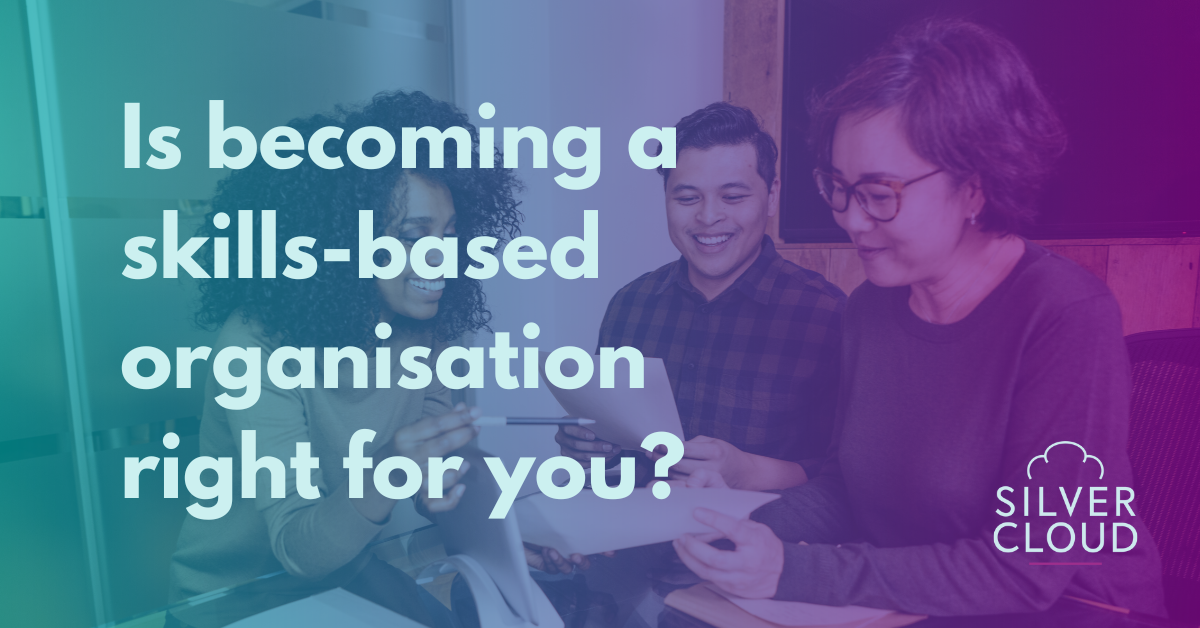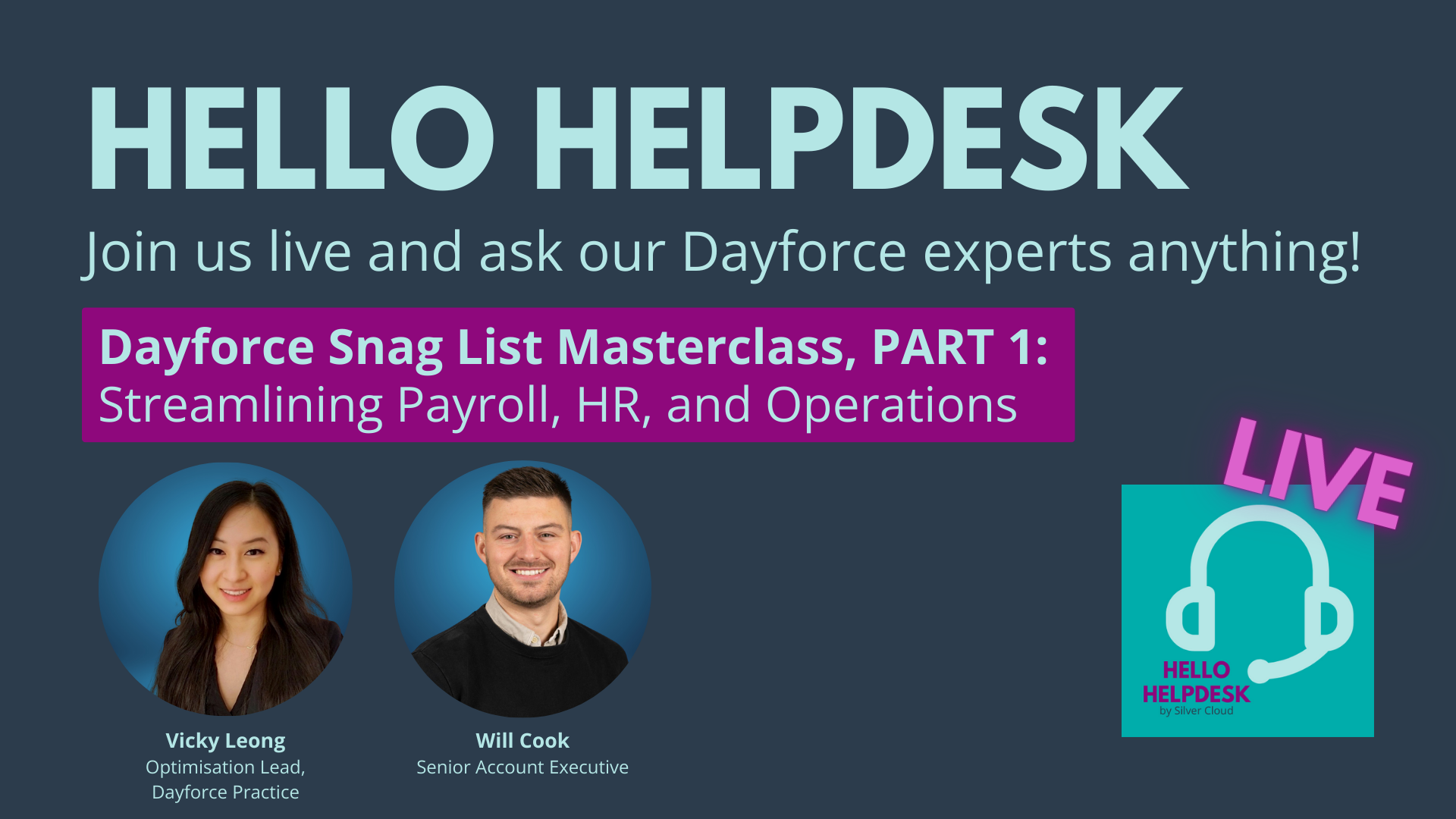OKRs - The way to get the your voice heard in the boardroom | Guest post from Betterworks
by Silver Cloud

Guest Post from: Betterworks
Big thanks to Bruce Walcroft, of Betterworks who has provided us with this guest article. Enjoy!
Over the last 20 years I have seen senior leaders within the HR and People business areas fight their way into chairs around the boardroom tables. The importance of the People function in keeping an organisation running is finally understood and the need for an engaged and high performing workforce is seen as one of the key missions of most business leaders.
But despite HR’s triumphant inclusion in the conversation, I still repeatedly hear from many HRDs, CHROs and CPOs that they feel like their voice, whilst present, is not necessarily valued to the same degree as the voices of the heads of Finance, Sales and Products.
The two facts at first glance don’t seem to be logical. If you ask the Head of Sales whether they would like their teams to perform better, we all know what the answer would be. So why are they not pushing for more focus on the performance enhancing areas that the People Team has responsibility for? In essence – why do the senior leaders not respect the performance activities that the People Team are championing?
Moving beyond ‘tick-box’ exercises…
I believe that there is a simple reason for this – the performance related activities carried out by most organisations are broken. Research shows that they are often designed in a way that makes them tick-box exercises – an annual event that has to be completed in order for an employee to be considered for a bonus or a potential raise. A non-engaging dictate passed from Manager to employee with little thought as to whether these tasks are really important to the progress of the business, or to whether they are designed to inspire and engage their team members.
‘But we’re different here’ I hear you all cry – ‘We use SMART objective setting processes to make sure that they are set up in the right way, and our employees are really involved in the process’. And I’m hoping that some of you are right – but the sad truth is that when employees are surveyed the results generally show the opposite – Deloitte and Mercer reports still show almost 80% of employees surveyed don’t feel that the HR led performance activities are assisting their execution.
So, what can be done? How can HR ensure that their processes engage the employees to focus on the activities that the business wants them to, but also engages the employees to understand where they fit in the organisational plans?
Putting it plainly – How do you make sure that you are linking your people to your business strategy?
The OKR methodology
That was the exact question that I was asking myself when I was introduced to the OKR methodology. OKR stands for ‘Objectives and Key Results’ and is an established process for aligning employees to the strategy that the organisation is working towards.
It’s a methodology used by some of the greatest business success stories of the past few decades – Google, Amazon and Netflix are all companies who pin part of their success to embracing OKRs. But this is not just something for the high-tech industries – Retailers like Farfetch and SSENSE, Banks like Santander, manufacturers like GE or Siemens, not for profits such as the Gates Foundation and Bono’s ‘ONE’ campaign – even the Visiting Nurse Service of New York all utilise OKRs in their business strategy.
What are the key differences of the approach? The first is the move to transparency. I can view not only my own and my team’s Objectives, but also the objectives of every other employee within the organisation. This breaks down the silos that can build up organisations.
Ask yourself an important question – within your current performance process can you be sure that two different groups in the organisation are not working on the same activity, and potentially duplicating work, or even worse, coming up with different solutions which will pull your business in competing directions? This is prevented by the OKR framework.
Similarly, the ability for teams and individuals to hold accountability for and be tracked against the completion of the objectives means that the progress being made on initiatives across the business can be easily understood and monitored.
The second is the increased engagement that employees get from the process. OKRs allow employees to set up objectives which they then align up to the strategic goals (Referred to as ‘Laddering-up’), alongside the more traditional approach of cascading down from the top. This ensures that employees are given a great deal of autonomy in the objectives they pursue, so those on the ‘coal face’ are able to decide how best to achieve the objectives.
Think how different this is to your current model where the secret ‘Chinese whispers’ of passing objectives from manager to team member often means objectives for those at the end of the chain are no longer helping the top-level objectives to be achieved.
The third, and most important difference to answer the questions raised in this article is in the association with the organisational strategy. The approach requires the alignment of the objectives to others in order to make it clear how the objective contributes to move the organisation forward in the agreed direction.
It is this element that really increases the visibility of the HR department’s impact on whether a company is going to achieve the strategy has been set, and how much influence the HR programme of OKRs has on the agile adjustments that can be made to quickly change and re-align to any ‘course corrections’ made to the strategy due to internal or external changes.
Suddenly the CEO, CFO and Senior team understand why the objectives the employees are working on are so central to the success of the business. Rather than a divorced process of performance objectives and strategy, the two elements are now fully intertwined.
So if like many organisations, you know that it’s time to shake-up your performance process, invest your time in OKRs and don’t be surprised when alongside your seat at the boardroom table, you also find that your colleagues are sitting up and paying attention to what you’re saying.
About the Author
Bruce Walcroft is a Software Consultant who has worked in the HR and Performance arenas for the last 20 years, and has helped many companies to understand new ways of approaching some of the challenges within the performance space.
He currently works for Betterworks, a Silicon valley based software company who are seen as the world leaders in Execution Software and the effective use of OKR methodology.
Please feel free to reach out to Bruce on Linkedin if you have any questions or visit their website to book a software demo.



